Fish Thrive in Douglas Lake, Even After Hurricane Helene
The Tennessee Valley Authority boat nosed between submerged tree branches as Zach Bennett swooped a long net into the water. He brought up fish after fish.
Largemouth bass. Smallmouth bass. Walleye, sauger and black and white crappie. Species that anglers dream of.
And that’s why Bennett, TVA fisheries biologist, and this Fisheries and Aquatic Monitoring crew were here at Douglas Lake – to survey sport fish and assess overall reservoir health after Hurricane Helene.
Monitoring TVA’s reservoirs is part of a watershed-wide program that ensures the aquatic creatures of the Tennessee River system are healthy. When these species thrive, communities thrive – sportsmen, campers and other outdoor enthusiasts all contribute to the vitality of local economies.
“We monitor 15 to 20 reservoirs for sport fish to make sure we’re doing our part along with the Tennessee Wildlife Resources Agency,” Lyn Williams, Fisheries and Aquatic Monitoring manager, said. “In the fall, we have a similar program but we’re looking at every fish, not just sport fish. They’re the canaries in the coalmine.”
These types of programs help protect native habitat and native species all throughout the watershed. This ultimately benefits residents and businesses – and TVA as it manages the river for navigation, flood prevention and power generation.
Results of the Douglas Reservoir survey give clues about how storm debris may have impacted fish – and the local fishing industry – long-term.
“I think there are a lot of questions out there about what’s going on after Helene and about what TVA does in general,” Shannon O’Quinn, TVA senior water resources manager, said. “Most people don’t know that we do this kind of work.”
“It’s so important for these efforts like spring sport fish to make sure we’re doing a good job, that we’re managing these reservoirs in this river system the way we’re intended to,” Williams said.
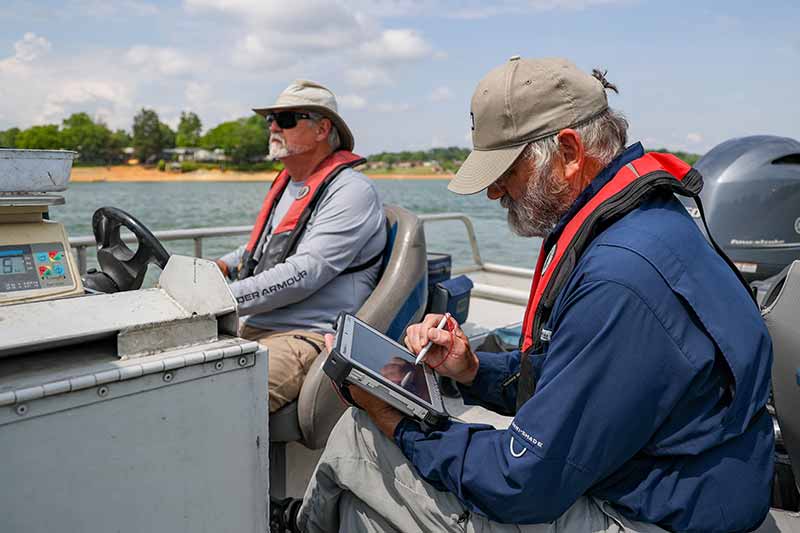
Pete Mangum and Kurt Lakin, TVA fisheries biologists, during the spring sport fish survey on Douglas Lake. (Photos by Susan Ehrenclou / TVA)
Scoop and Flip
Each day of monitoring means motoring to 12 pre-selected sites, the same ones year after year.
At each, the crews spend exactly 30 minutes netting fish and scooping them into the boat for an in-depth assessment.
“Most reservoirs are broken up into three zones,” Williams explained. “You have the forebay right above the dam, a riverine zone where you’re transitioning between the river and reservoir, and an inflow right below the dam.”
Boats motor to pre-determined coordinates.
“We keep it consistent over the years, at the same locations,” Kevin Parr, fisheries biologist, said. “You’re trying to get representation of all the different habitat types, collect as many sport fish as possible and then observe them for any illness or injuries. We record that into our computer.”
Bennett scooped, then flipped the fish into a holding tank.
John Justice, TVA fisheries biologist, measured and called out lengths in millimeters. Kurt Lakin, reservoir fisheries biologist, tabbed them into the digital database.
“Largemouth, 340.”
“Smallmouth, 470.”
“Largemouth with hook injury, 451.”
“Largemouth, 380.”
“Largemouth, 334.”
Justice slid each fish back into the holding tank so they didn’t re-catch them. At the end of 30 minutes, the biologists reached in and slipped them one by one back into the lake.
And then it was time to move again.
Pete Mangum, who’s worked on the Fisheries and Aquatic Monitoring crew for more than five decades, expertly piloted the boat into another branchy tangle.
“You’ve probably done this move about, oh, 500,000 times,” Justice joked to Mangum.
And the rhythm began again. Scoop, flip, measure, record. The crew concentrated on their work.

TVA fish biologist Ian Lowery during the spring sport fishing survey.
Hurricane Impacts
In the months following Hurricane Helene, many people worried what impact floating debris might have on the water and fish populations.
“Generally, structure is good for fish,” Parr said. “In the past, TVA has partnered with TWRA to put structure in the water for the fish to use for spawning habitat, for hunting, for feeding, all those things.”
But Hurricane Helene brought unusual debris – wood, appliances and other remnants from the devastating storm. For months, people have wondered how fish would fare.
“There’s really no way to know without being underwater with them to know how they’re reacting to it,” Parr said.
Taking a survey is the second-best way to get a fish’s perspective on its changed habitat. It’s possible to detect changes because TVA and partners like the Tennessee Wildlife Resources Agency have a long-running monitoring record.
“We have data before the storm,” Parr said. “We can look at the data that we collect here today and see how it trends against that.”
Having an in-house, watershed-wide monitoring team means TVA is able to respond in real-time to storms and other events.
“Douglas wasn’t actually on the sampling rotation this year,” Williams said. “But we thought there was good reason to monitor this after Helene. This was a highly impacted reservoir, along with the Nolichucky system. We’ve done this since the 1990s, so we’ll be able to see if there’s any real impact.”
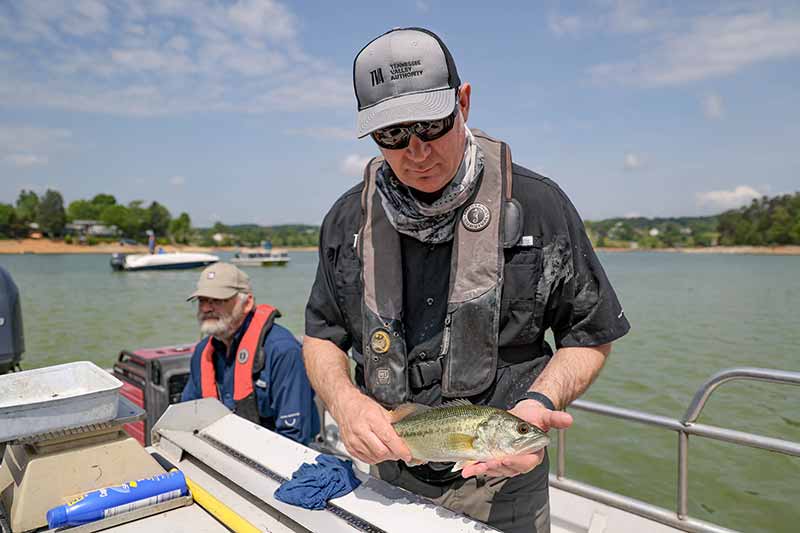
TVA fish biologist John Justice assesses fish health during the survey.
Really good results
At the end of the survey, both boats had good news.
“It seems like we’re seeing good fish results,” Williams said.
Justice, measuring hefty fish after fish, agreed.
“One of the things we like to see, too, is a good distribution of age classes,” he said. “That tells us we have fish for years to come.”
And fish behaved as the crews expected, too.
They preferred the shade of overhanging trees, the shelter of rocky bottoms and cover of floating fallen trees.
The crew caught more in waters above shelter of submerged reef balls – huge concrete habitats O’Quinn worked with the Tennessee Wildlife Resources Agency to construct over the past decade.
Stable fish populations meant good news – for the fish, and for the many people who seek them out all summer long.
“Recreation has such an incredible impact on all the communities in the Valley region,” Williams said. “People come in to fish and to stay. And locals have grown up on these reservoirs, fishing, boating, waterskiing and camping.”
“The fish we saw today looked good,” Lakin said. “As they continue to take more samples, they’ll continue to see that.”
Photo Gallery
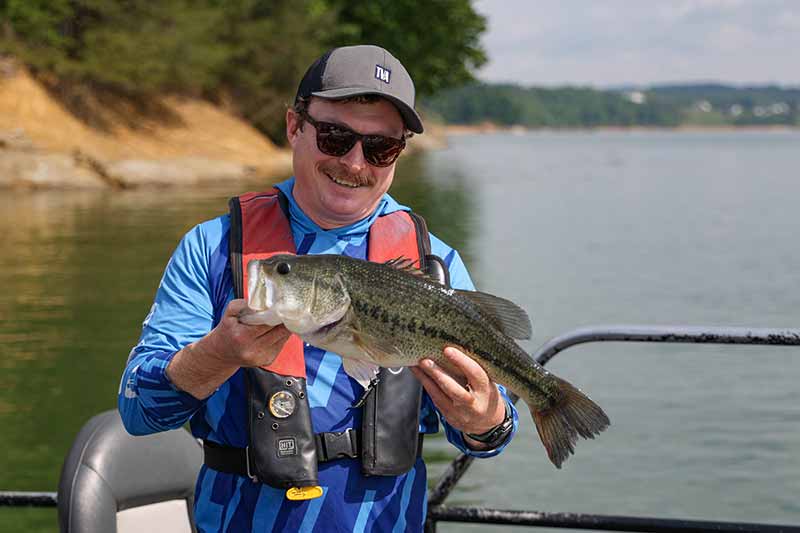
TVA fish biologist Kevin Parr shows one of the sport fish caught during the survey.
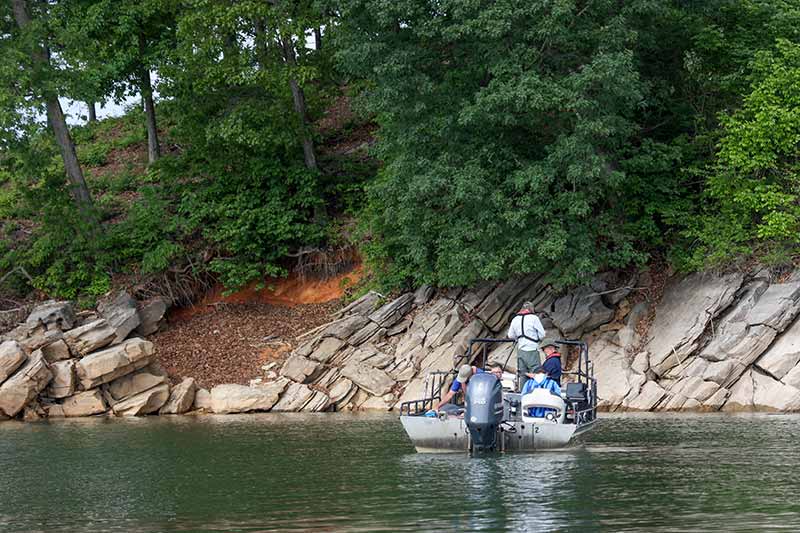
A crew of Fisheries and Aquatic Monitoring biologists.
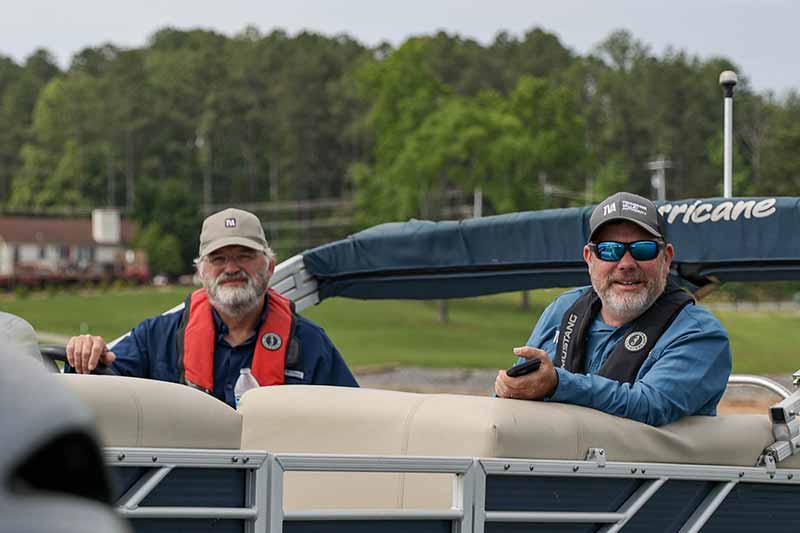
TVA’s Kurt Lakin and Shannon O’Quinn on a support boat during the survey.
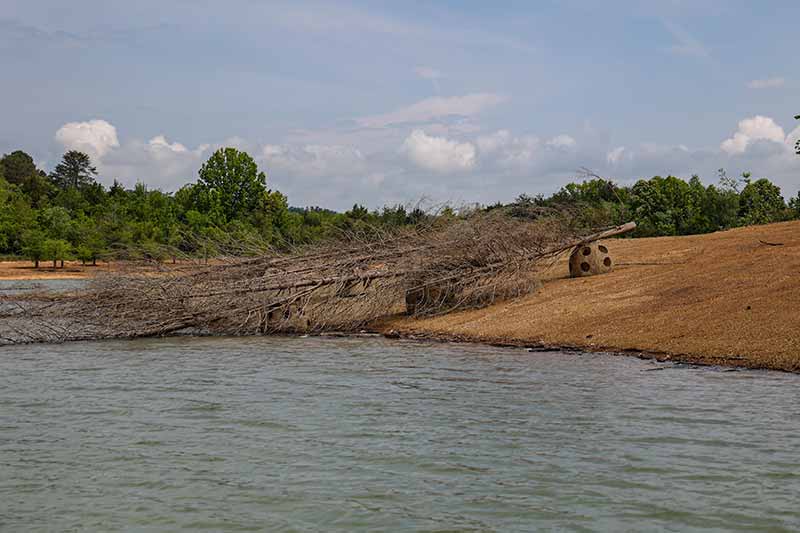
Fish habitat balls on the drawn-down Douglas Reservoir shores.
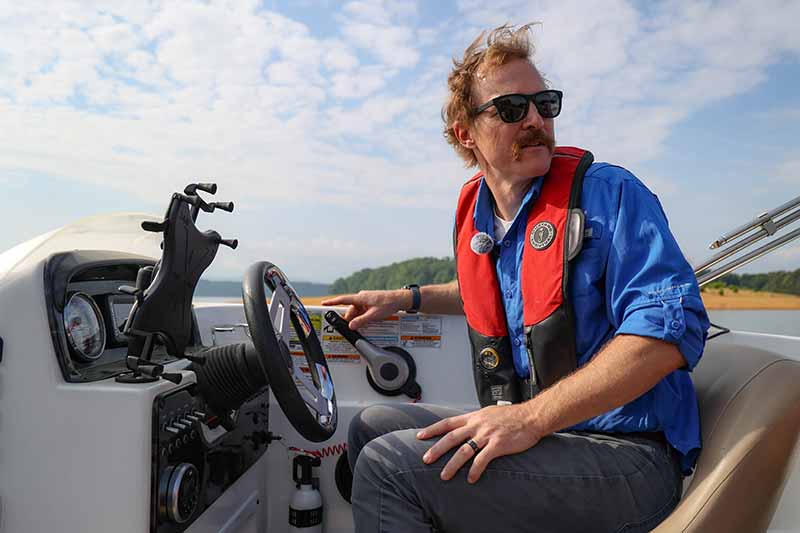
Lyn Williams, TVA Fisheries and Aquatic Monitoring manager, pilots a boat to a sampling site.
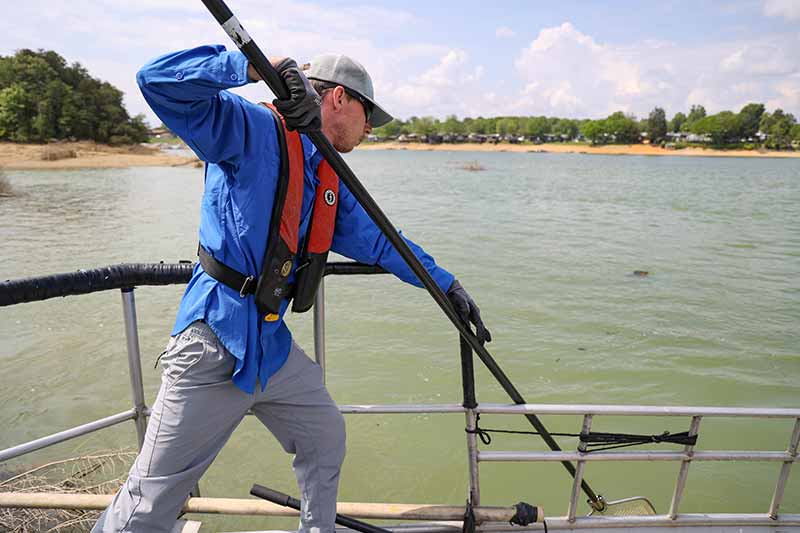
Zach Bennett nets fish that the crew will assess and release.
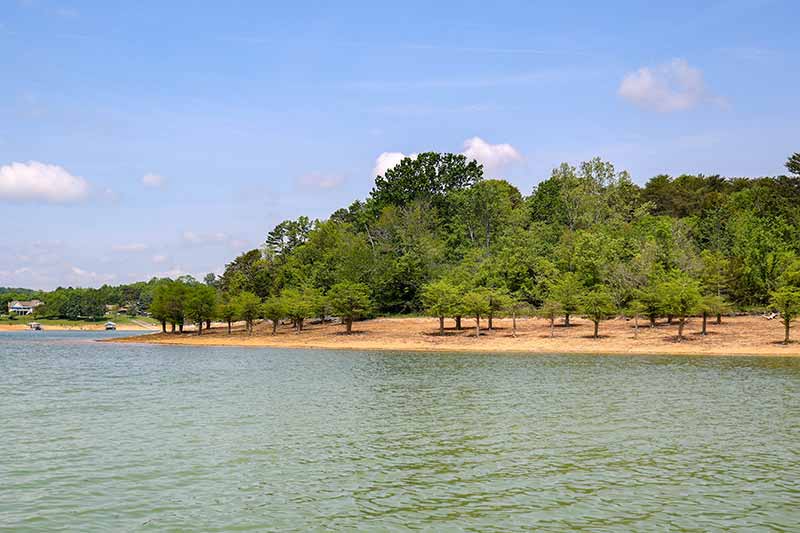
As part of its tree planting mission, TVA planted shore-stabilizing cedar trees at Douglas Lake.
PHOTO AT TOP OF PAGE: TVA fisheries crew Mangum, Justice and Bennett work on sites in Douglas Lake during the survey.

